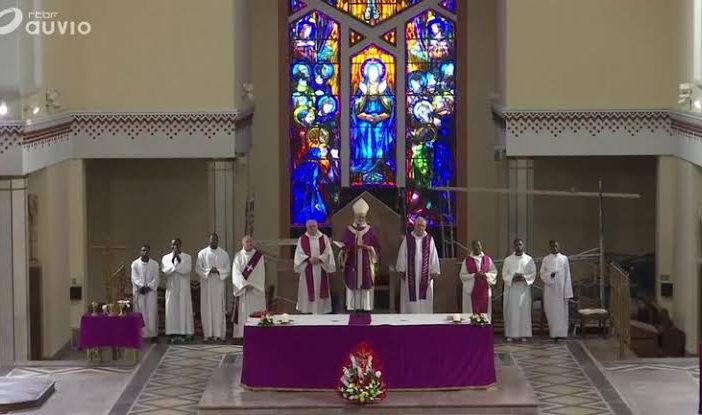The North Africa Post
Hundreds of Christians have celebrated Tuesday in Rabat, the capital city of the kingdom of tolerance, the midnight Christmas Mass in Saint Pierre Cathedral, the seat of the Archdiocese of Rabat.
The Christmas Mass was celebrated in Rabat in piety and great admiration for Morocco, the land of tolerance and coexistence. Shortly before the mass, Father Nourissat praised the role that Morocco plays in the coexistence of the three monotheistic religions, describing this role as significant, in a statement to le360 news website.
In his homily, Father Daniel Nourissat recalled the birth of Christ, “king of the universe”, and advocated “love and peace”, le360 reports. A couple of Canadian tourists told the website they were “delighted to be able to celebrate Christmas Mass in a country where tolerance, peace and stability reigns”. Actually, it was an ordinary Christmas eve in the land of Islam.
A similar Mass was held in Casablanca, in the imposing church of Notre Dame de Lourdes, built in 1954 and classified as national cultural heritage and other masses took place in different churches or chapels in Marrakech, Agadir, El Jadida, Tangier…
It is worth recalling that, although the history of Christianity in Morocco is ancient, it is with the advent of the protectorate that the Catholic Church will develop rapidly. This development witnessed some internal battles between the territories under Spanish domination and those under the yoke of France.
To close this bellicose chapter, Pope Pius XI will create two Apostolic Vicariates: one with headquarters in Rabat, for the French zone, and another in Tangier, for the Spanish zone and the international zone of the city. In 1923, the two churches had strict instructions to avoid proselytism. In 1955, 200 churches or chapels were available to the 500,000 Europeans settled in Morocco.
The Church neutrality will however be broken when the Bishop of Rabat, Archbishop Lefèvre, publishes a letter supporting Morocco’s independence efforts. In his letter, he argued for the need to respect the wishes of the Moroccan people and their sovereignty claims.
Sultan Mohammed V himself approved the letter and invited Archbishop Lefèvre to the Feast of the Throne on November 18, 1952, where he claimed independence. After the massive departure of Christians from Morocco between 1975 and 1990 many religious congregations and the majority of churches were closed.
In the dynamics of Vatican Council II, ecumenism developed between the Anglican, Orthodox, Catholic and Evangelical Churches, which will result in the creation of a Council of Christian Churches in Morocco, and in 2012 by the creation of the Al Mowafaqa Institute.
Today, the Church is experiencing a revival of vitality thanks in particular to the many sub-Saharan students who have been welcomed in higher education establishments in Morocco for the past fifteen years and also the SubSaharan migrants settled in the Kingdom.
According to press reports, the Church in Morocco currently brings together around 30,000 Christians, including 20,000 Catholics and 10,000 Protestants.
POSTED BY NORTH AFRICA POST
North Africa Post’s news desk is composed of journalists and editors, who are constantly working to provide new and accurate stories to NAP readers.







